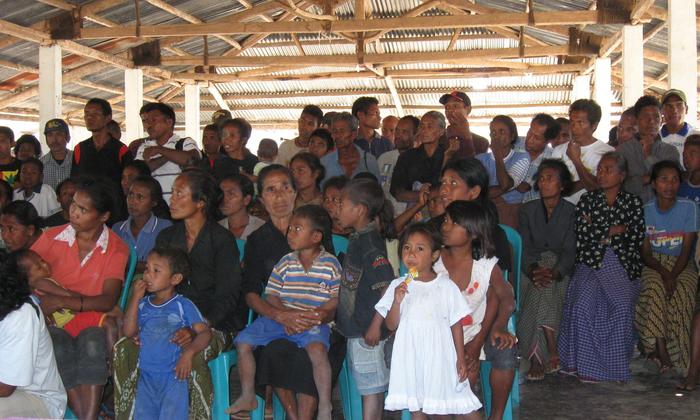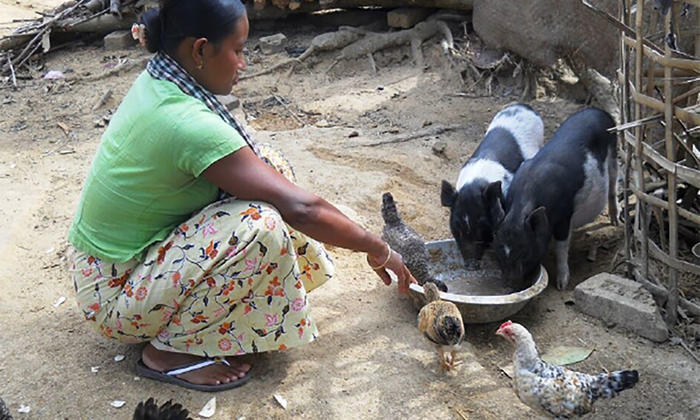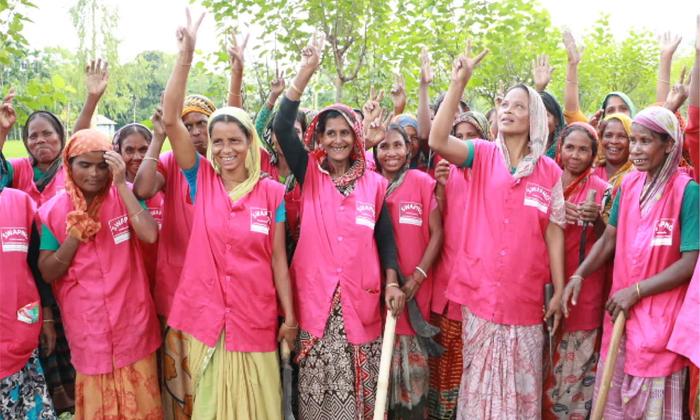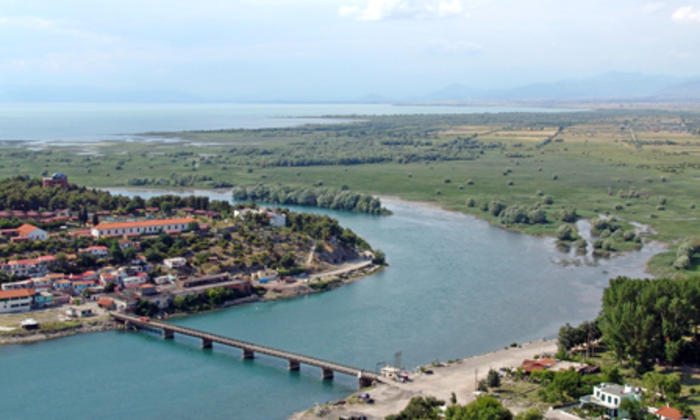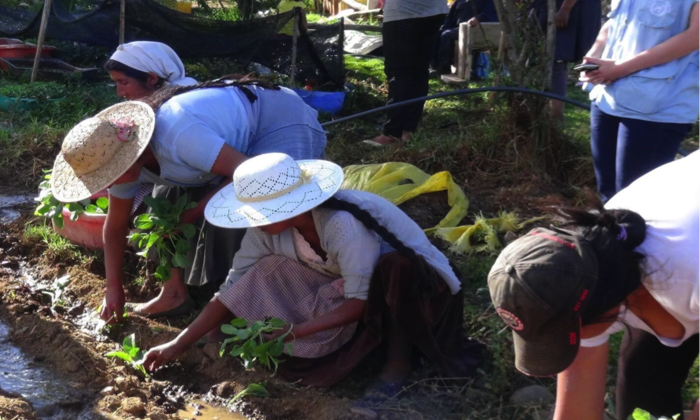The quantitative targets set by the project document for final beneficiaries of gender sensitive employment programmes were not reached, the key constraint being the overall costs of interventions targeting low-skilled youth and the length of time required to prepare them for labour market entry
Case study
Youth employment fund in Serbia

SDGs ADDRESSED
This case study is based on lessons from the joint programme, Support to national efforts for the promotion of youth employment and management of migration in Serbia
Read more
Chapters
Project Partners

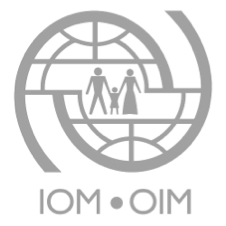
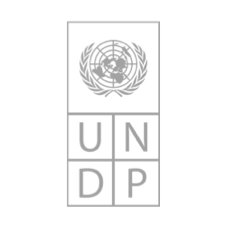

1. SUMMARY
The programme, “Support to national efforts for the promotion of youth employment and management of migration” (the Programme) combined employment and social policy objectives and integrated them into Serbia’s long-term development goals.
The transition to a market economy, years of conflict and economic downturn worsened the situation of many young people in Serbia. Approximately 500,000 youth left the country from1991 to 2001 in search of better livelihoods, while hundreds of thousands of refugees and displaced persons exerted dramatic pressure on the country’s labour market. Following the Readmission Agreement signed by Serbia and the European Union in 2007, it was estimated that between 100,000 to 150,000 individuals would return to the country, with more than 40 per cent of these expected to settle in the districts of Pcinjski, South Backa and Belgrade.
Against this backdrop, the Programme was designed to contribute to the overall development of the country and to assist national institutions to deliver on policy objectives. The design of the Programme built on the knowledge, experience and lessons learned, by the participating UN agencies and national institutions, on youth employment and migration. The Programme deployed a three-pronged strategy touching upon policies, institutions and programmes that converged to deliver integrated employment and social services, targeting disadvantaged young women and men who had been migrants in South Backa, Belgrade, Nisavski, Pomoravski and Pcinjski districts. The Programme centred on three interlinked outcomes aimed at:
- Developing evidence-based policies on youth employment and migration;
- Strengthening the capacity of national institutions to design integrated labour markets and social services that are aligned with policy objectives; and
- Supporting local institutions to pilot innovative employment programmes and social services.

Aleksandar, a Programme beneficiary, now proud owner of a car washing station
2. THE SITUATION
Nearly half of all youth in Serbia were unemployed when the Programme began in 2009. The Programme worked with the government to increase youth employment, especially for disadvantaged young women and men and members of the Roma minority, while concurrently reducing the negative impact of return and irregular migration.
In Serbia, the ministry in charge of employment and the National Employment Service (NES) planned active labour market policies (ALMPs). Funds were provided to local employment offices on the basis of the available annual budget and the unemployment situation in the particular catchment area. ALMP funding was drawn from the government budget, autonomous territories and local government, unemployment insurance contributions, grants and donations. In 2010, the total amount allocated to ALMPs for job search assistance, employment subsidies, labour market training programmes, self-employment schemes, and internship programmes targeting young secondary schools and university graduates amounted to US$45 million. In the same year, the share of at-risk youth—those with a low level of educational attainment, minorities, refugees and displaced persons—referred to active labour market programmes accounted for only 10 per cent of total young participants (aged 15–29), even though they were the largest youth population group registered with the NES.
To support labour market institutions in the piloting of integrated active labour market programmes targeting disadvantaged youth, the Programme decided to strengthen and expand the Youth Employment Fund (YEF), established in Serbia under a previous technical assistance programme of the ILO. The Programme pooled resources from various sources (central and local government, the international donor community and the private sector) to finance youth employment promotion programmes.
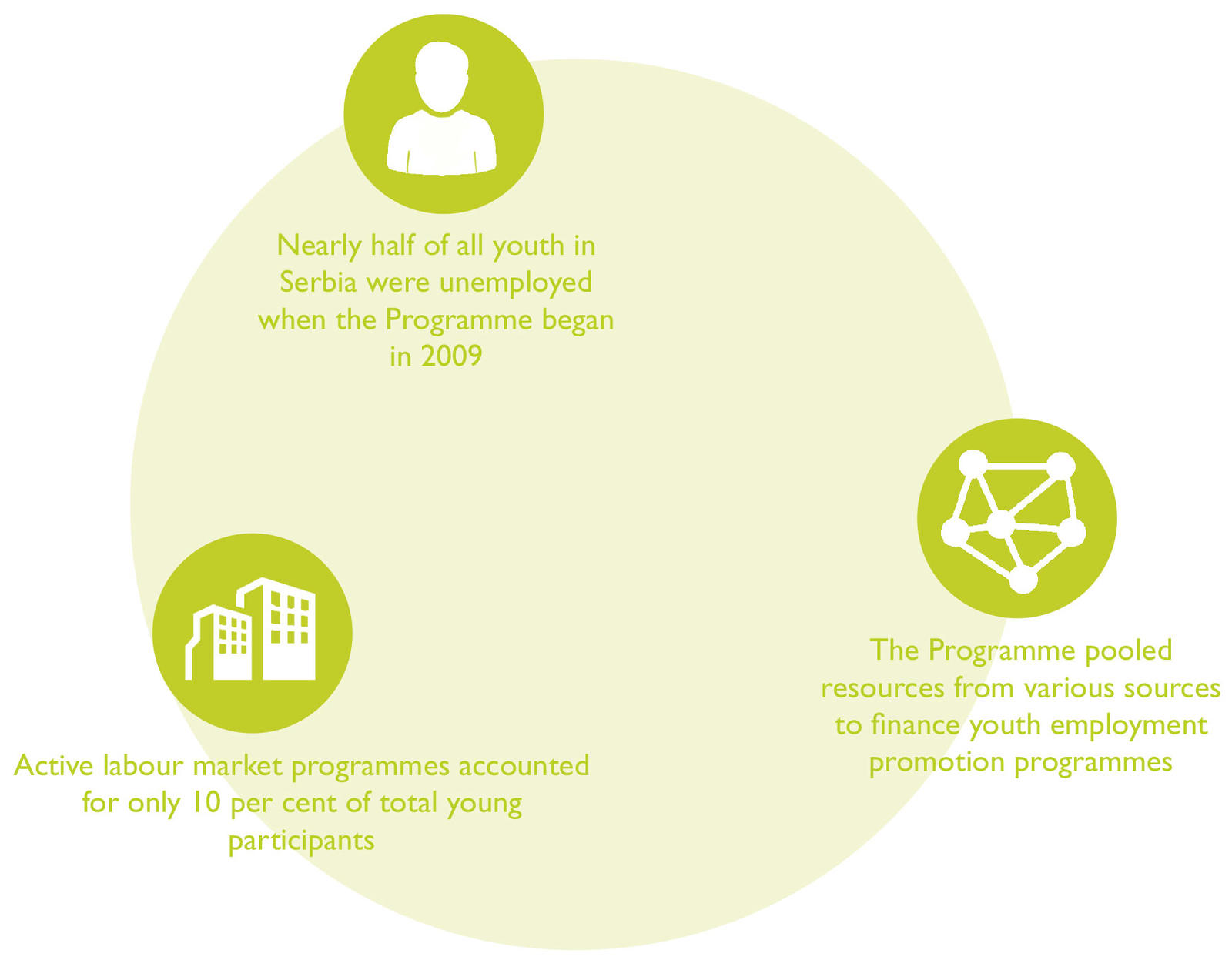
3. STRATEGY
YEF under the ILO had already piloted arrangements for the co-financing of active labour market programmes on a small scale. During its initial phase, YEF had focused on:
- Establishing an accountable management system for the funds allocated by it and the government of Serbia;
- Setting procedures for the disbursal of funds by the NES to implement programmes at the local level;
- Designing the sequence of services and programmes to be provided as part of the employment package (e.g. eligibility criteria, type and duration of each programme and compensation levels); and
- Establishing a monitoring and evaluation system to measure the results achieved.
The second phase of the operations of YEF, under the Programme, centred on the design of services and programmes and the testing of implementation procedures for approval by a Management Committee set up to administer the Programme. This was done on the basis of a set of guidelines for the implementation of active labour market programmes targeting disadvantaged youth. These guidelines included eligibility rules for young participants and external service providers, and descriptions of services and programmes. They also included sequencing of measures and workflow planning in local employment offices; samples of evaluation grids for service providers, application forms and questionnaires for follow-up surveys; and monitoring and evaluation procedures.
The Management Committee approved these guidelines, allocated the available funds across the targeted districts, and determined the scope of the implementation mandate for the directors of the local offices. The target group comprised unemployed youth aged 15–29 with low educational attainment (lower secondary education or less) and facing additional barriers to labour market entry—young Roma, internally displaced persons and refugees, youth with disabilities, beneficiaries of social assistance and returnees.
YEF financed three main lines of services. On-the-job training was delivered by private enterprises and included an external assessment system for the competencies acquired by participants. YEF also financed self-employment programmes and programmes for young persons with disabilities (e.g. vocational rehabilitation services, on-the-job training, employment subsidies and workplace adaptation grants).
From September 2009 to April 2012, the resources provided to the Programme enabled it to target 4,160 unemployed youth. A performance monitoring system was also established to measure the employment and earnings effects of the services financed by YEF.

Dragana, a Programme beneficiary, now employed at a convenience store
4. RESULTS AND IMPACT
The Programme contributed to the implementation of labour market programmes and services targeting over 4,000 young unemployed, mostly those with a low level of education (89 per cent), no prior work experience (69 per cent), and long-term unemployed (64 per cent).
Further, YEF combined different services and programmes into one package to address the multiple labour market barriers faced by single individuals, and improved the accountability of employment and social projects funded by public-private partnerships. It strengthened the decentralization of decision-making at local levels, and increased the efficiency of procedures for the implementation of youth employment interventions at both national and local levels.
More than 2,800 disadvantaged young men and women (49 per cent and 51 per cent, respectively) took part in vocational training and job placement. Some 89 per cent of beneficiaries had primary education or less; 64 per cent had been unemployed long-term; 69 per cent had no prior work experience; 15 per cent were Roma, 6 per cent were youth with disabilities and 8 per cent were young beneficiaries of social assistance. The number of youth aged 15-29 who were registered as unemployed dropped 5 per cent in the project areas, and the proportion of disadvantaged youth who were registered dropped by almost 25 per cent. By comparison, in neighbouring districts, the respective shares increased by more than 6 per cent and 25 per cent.
Fifteen new indicators were established in the areas of employment, social protection and labour migration. The Programme helped shape a new national strategy for employment and produced the first white paper for labour migration in Serbia. Twenty-two employment councils assisted in completing local action plans for youth employment. Employment Info-points were used by over 5,000 youth. More than 450 case managers and supervisors were trained to deliver targeted youth employment services.
The job placement rate at follow-up was 24.4 per cent for on-the-job training courses, 74.3 per cent for self-employment and 97.6 per cent for programmes targeting young people with disabilities. More than 90 per cent of Programme beneficiaries had earnings above the minimum wage.

5. CHALLENGES
The quantitative targets set by the project document for final beneficiaries of gender sensitive employment programmes (3,000 disadvantaged youth receiving individualized employment services) were not reached, the key constraint being the overall costs of interventions targeting low-skilled youth and the length of time required to prepare them for labour market entry. However, the employment rate of participants that took place in measures offered through YEF were overall satisfactory.
Despite the lack of a programme manager, activities continued to be implemented in line with initial plans. This was largely due to the commitment of all UN participating agencies to drive the Programme and add value to the change processes affected within national institutions. The Programme Implementation Unit continued to regularly organize meetings in order to discuss ongoing issues and further improve coordination among partners.

International Youth Day celebrations 2010
6. LESSONS LEARNED
Joint programming, as a modality to implement complex and innovative interventions, is effective when underpinned by a robust design logic, with clearly assigned responsibilities among participating UN Agencies, and an extensive involvement of national and local partners in all the stages of the project cycle. A thorough understanding of the challenges to be addressed and appreciation of national priorities ensures maintenance of the relevance and strategic fit of the intervention. Open dialogue between participating agencies and national and local partner institutions ensures their commitment to the attainment of intermediate outcomes and final ownership of the policy, procedural and legislative changes realized. Bearing these principles in mind the Programme succeeded in:
- Pooling existing resources and attracting new ones towards the achievement of national youth employment objectives. Its relevance consisted primarily in the introduction of an accountable, transparent and effective resource allocation method for the implementation of interventions targeting groups of young people who were most at risk of social exclusion.
- The introduction of new, streamlined procedures in the workflow of the Public Employment Service which increased the efficiency of service delivery, not just for young people, but for all registered unemployed. This made the intervention sustainable over the long term.
- Being able to leverage resources stemming from different sources towards the achievement of a common objective.
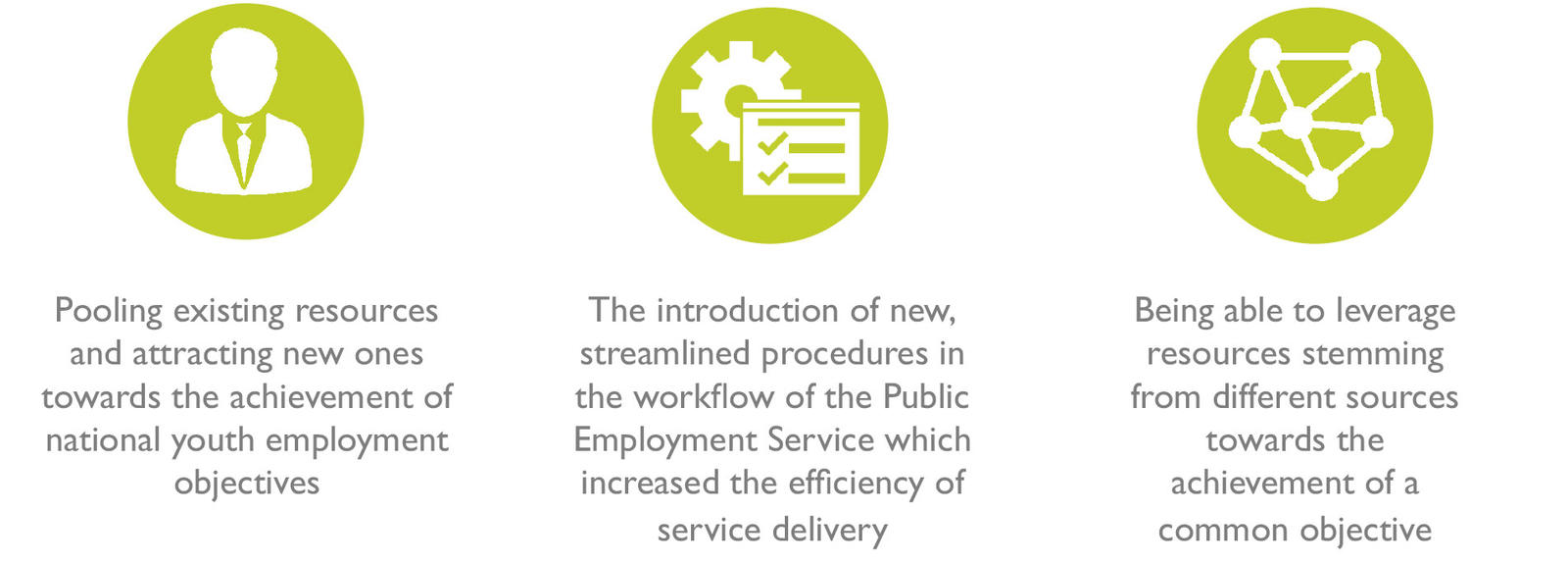
The most valuable lessons learned from Programme implementation were:
- Policies aimed at improving youth employment prospects should be wide in scope, while programmes need to be targeted to those who are most at risk of permanent labour market exclusion. The experience of the Programme revealed that effective targeting produces good programme results, especially in terms of increasing the labour market attachment of participants.
- Support for the creation of local action plans contributes to the expansion of locally initiated active labour market programmes.
- The participatory approach adopted, the constant involvement of stakeholders, partner institutions and other organisations ‒ as well as the subsequent extensive dialogue established amongst them ‒ yield higher results in terms of impact and sustainability and improved policy coherence and coordination in the delivery of youth employment and social inclusion policy objectives.
- Clear targeting approaches facilitate the delivery of integrated services to the most vulnerable among the youth population. The establishment of clear and transparent criteria for the selection of young clients most in need of assistance allows the segmenting of service delivery (from low to high intensity assistance) and maximizes the effect of resource-intensive treatment.
- Outreach practices are critical to involving discouraged youth living at the margins of society. Just making reintegration services available is not sufficient to ensure that young people most at risk actually take them up. This is particularly the case for young Roma individuals living in settlements or inter-generational beneficiaries of financial social assistance.
- Case management approaches are key to ensuring young clients receive all the support and services needed for reintegration into society. Approaches that build on a comprehensive needs assessment and clear action planning ensure client commitment to treatment, on the one hand, and the involvement of relevant service providers on the other.
- Evidence-based policy and programme formulation should not fall within the exclusive mandate of national-level institutions. Assistance to local government institutions in identifying specific employment and social challenges is necessary to support decentralization processes and make the delivery of national policy objectives responsive to the needs of people and communities.
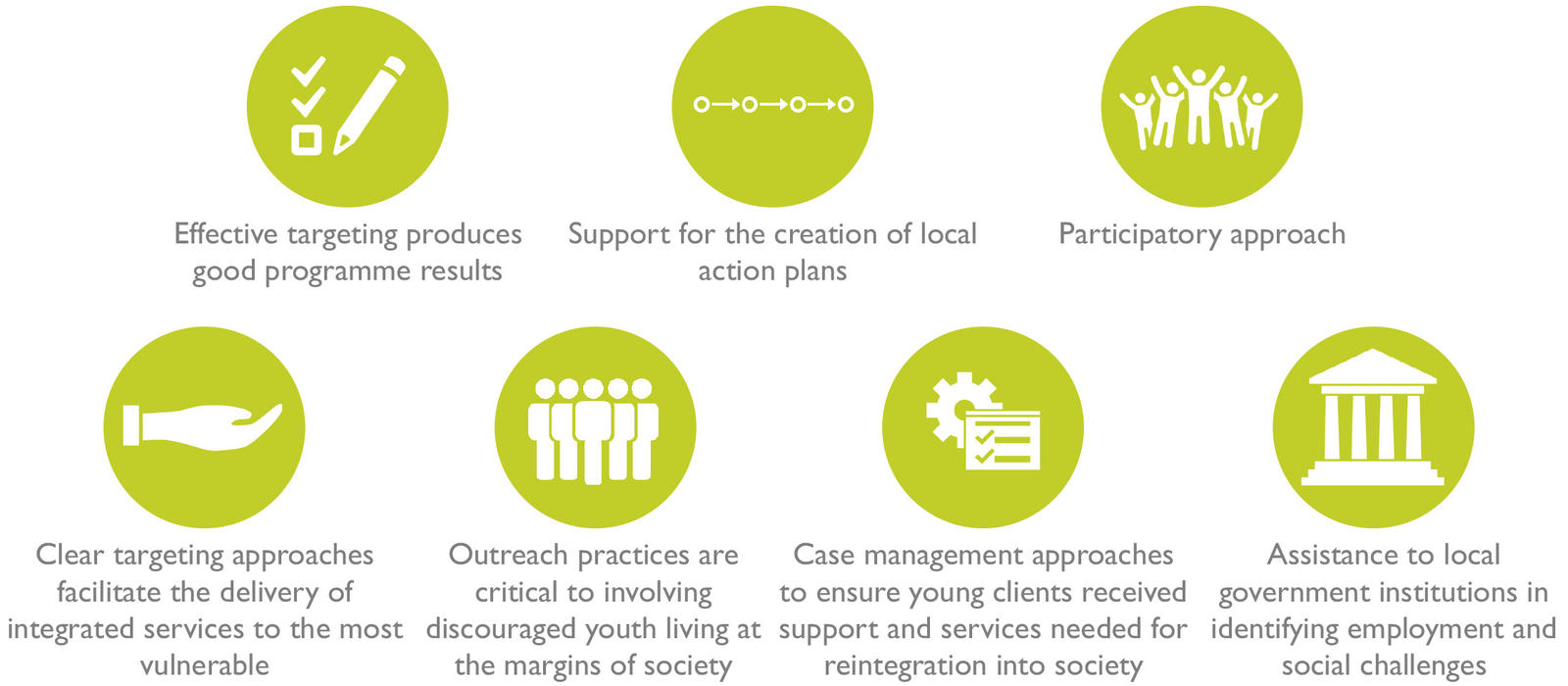
7. SUSTAINABILITY AND POTENTIAL FOR REPLICATION
At the close of the Programme, the ministry in charge of employment had already committed to continue the financing of the Youth Employment Fund and had embedded the good practices stemming from the Programme on targeting approaches into its strategic planning. This was most evident in the inclusion of the most successful ALMP designed by the Programme into the list of measures regularly offered by the NES. The integrated service delivery model approach has been further supported through the NES 2011-2020. The Government’s Instrument for Pre-Accession Assistance (IPA) planning envisages a nation-wide roll-out of the model developed within the Programme.
There are three basic requirements to successfully replicate the methodology of the Programme. The first is the existence of a public employment service with experience in the design and implementation of labour market and social inclusion measures, and with reasonable geographical coverage of the territory. The second is previous experience in the management of labour market services and programmes (trained staff, established workflow procedures, ability to manage funds and report on expenditures). The third relates to the readiness of national-level institutions to decentralize implementation and administration of funds to the local levels. One of the key features of the Programme was the level of discretion assigned to the directors of local labour offices. Within the funding envelope and broad eligibility criteria approved by the Management Committee, these directors had the authority to prioritize certain target groups (youth with disabilities or young beneficiaries of social assistance) or specific economic sectors, and modify the sequence of programmes and services. This gave local managers the ability to adapt active labour market programmes to emerging needs. For instance, the effects of the 2008–09 economic downturn were most severe in the north of the country. To manage increasing inflows of young workers who had lost their jobs, the directors of the employment offices in the north decided to partially waive some requirements for participation in the interventions funded by the Programme.

Jelena, a Programme beneficiary who now runs a children's theatre workshop

